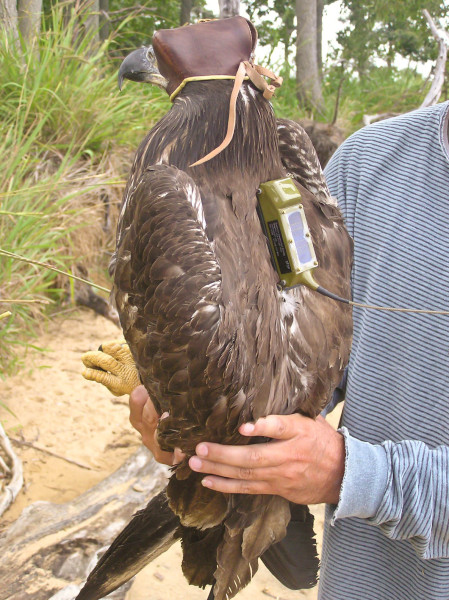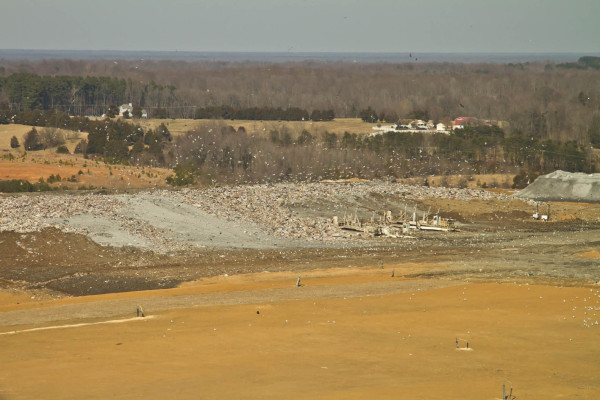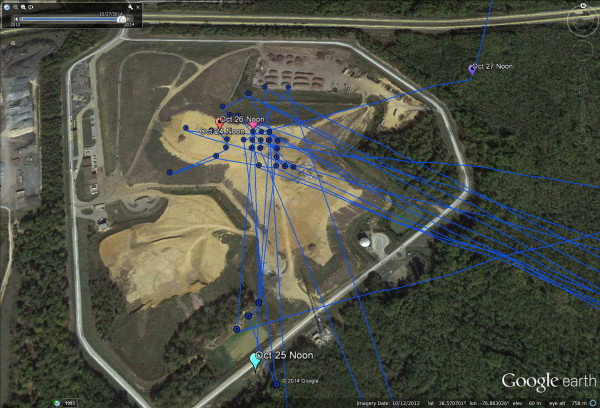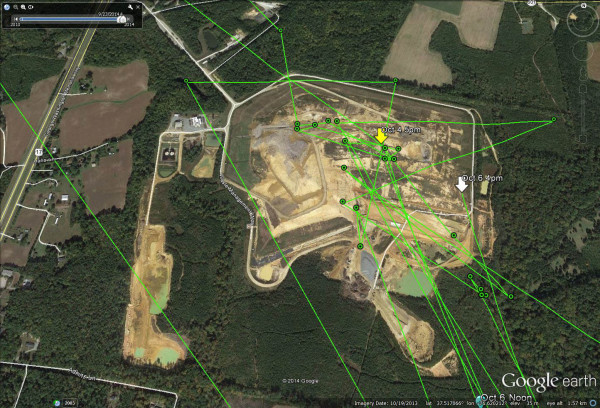Young eagles are more likely to eat junk food
The Wanderers
September 21, 2015Sharing the story of Hope
September 28, 2015
Out of “site” out of mind – they are strategically scattered across the landscape but masterfully hidden from view. Like slaughterhouses, we like them just beyond the edge of our awareness. But from the air, they stand out like buttes rising from the desert floor and even at 1,000 feet the putrid smell of aging garbage can make your eyes water. Throngs of gulls, crows, vultures and yes, eagles attend to them daily. This undignified scavenger community is the caboose from a long train of consumers. Landfills prop up their populations to levels well above what the landscape would normally support. However, food from landfills is generally believed to be of low quality and to carry an increased risk of disease and toxicity. Many questions remain about the individual choices birds make about eating garbage.

Bryan Watts holds a second-year bald eagle just after it was fitted with a satellite transmitter. Transmitters were used to track bird movements to answer a variety of questions including how frequently they used landfills. Photo by LIbby Mojica.
Recently, we analyzed satellite telemetry data to evaluate the use of 72 landfills by bald eagles within the Chesapeake Bay region. We delineated landfills on the landscape and examined the time that birds spent in and around them. We were particularly interested in the relationship between landfill use and bird age. Young eagles are known to be less adept at finding food and are less successful hunters compared to older, more experienced birds. Do these young birds resort to fast food while they are learning to be more effective hunters?

The active portion of a landfill supporting thousands of feasting crows, grackles, ring-billed gulls and vultures. During this flyover 22 eagles were counted on the ground including 2 adults and 20 younger birds. Photo by Bryan Watts.
Our findings, recently published in the Journal of Raptor Research, show that eagles shift away from using landfills as they get older. Hatch-year birds used landfills six times more often than adults and twice as often as third and fourth-year birds. In addition, second-year birds used landfills four times more often than adults. This pattern is consistent with what we might expect if birds are learning through experience. Young, inexperienced birds are opting for accessible and reliable but possibly poor-quality food over high quality food that is more difficult to obtain, while older birds have the experience to consistently obtain high-quality food and thus no longer require junk food.

A young eagle named Grace visits a landfill in Charles County, Maryland. The track line shows typical behavior of birds arriving from a night roost (out of photo frame) working the landfill, loafing, and using water ponds. Data from CCB.
One of the more intriguing findings of the study is that young birds varied dramatically in their use of landfills. Some birds rarely visited landfills while others were clearly landfill-junkies. The consequence of chronic landfill use to survival and other indicators of fitness such as acquiring breeding territories or producing young is unknown but remains an important line of investigation.
Written by Bryan Watts | bdwatt@wm.edu | (757) 221-2247
September 24, 2015




